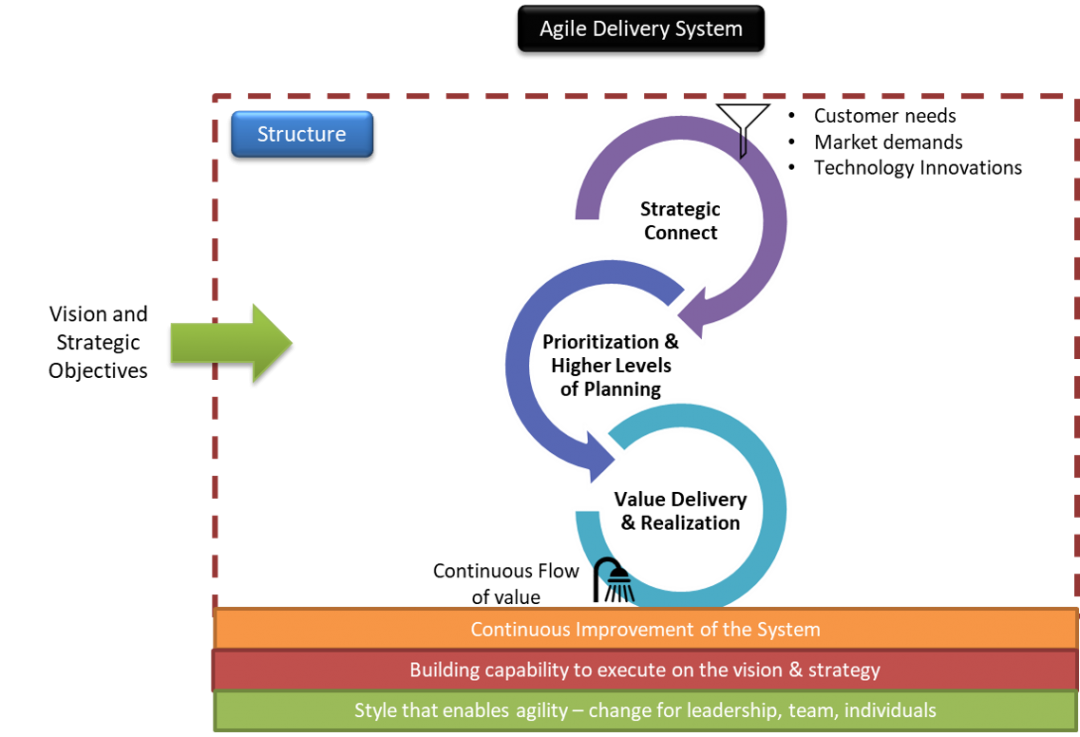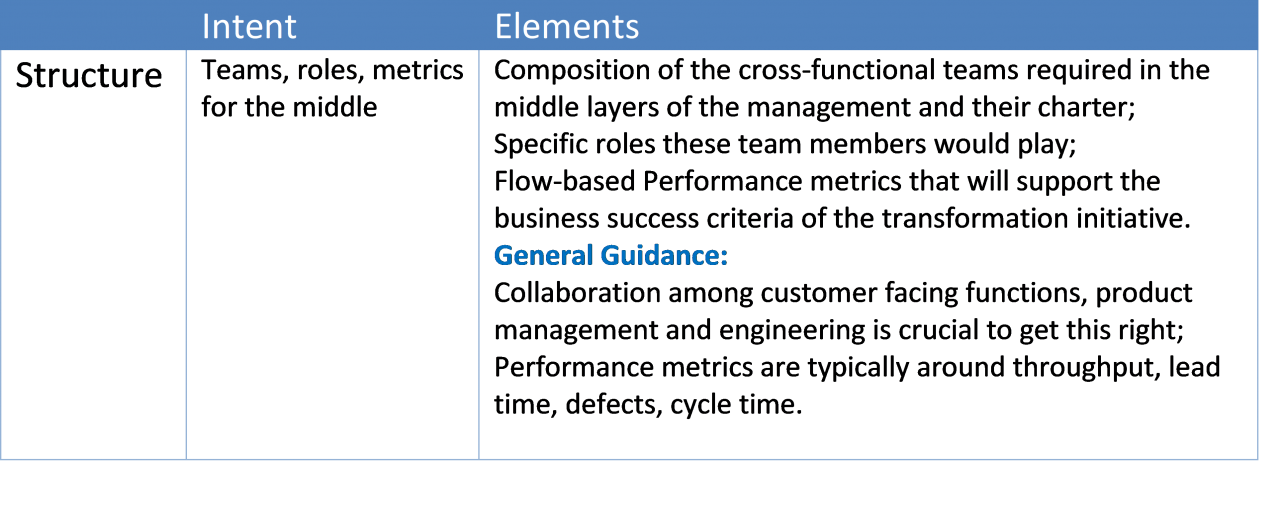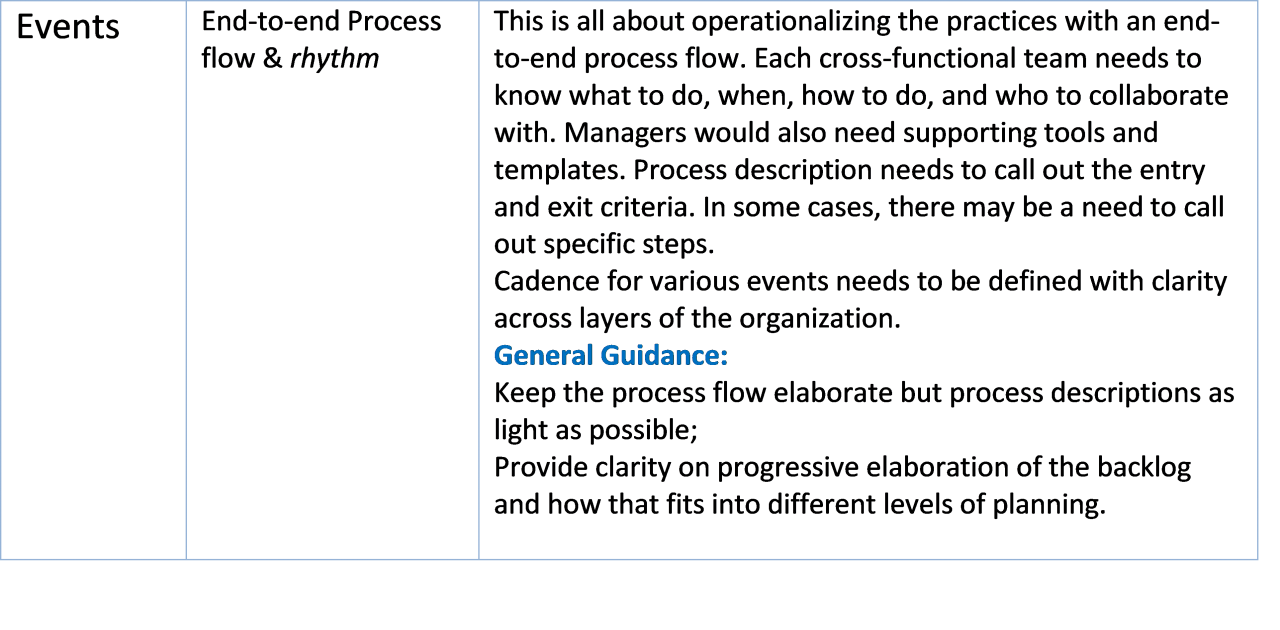One of the key challenges of major Agile transformation efforts in organizations has been the transformation of the middle layers – sometimes called the ‘frozen middle’. Typically the middle layer of the organization is least ‘touched’ in Agile Transformation initiatives. They learn concepts like servant leadership, collaboration, self-organization, psychological safety, agile culture, etc not quite knowing how to practice them in their context. They end up struggling and then they are often cited as a major reason why transformation did not yield the expected results.
I believe the real challenges are different – processes for the middle layers are not often well-defined; lack of cadence means there is no synchronization with the delivery team events; supply and demand are not always balanced; Alignment to strategy is not optimized for maximum value; inter-dependencies across systems make life difficult for everyone; No wonder, middle managers end up resorting to command-and-control mode to make things happen.
How do we address these challenges?
Despite their struggles, I find most managers maintain an excellent attitude. They are great to partner with and are highly skilled at execution. While a coach brings agile knowledge, managers bring organizational context. Together they could implement the actual processes that will work on the ground across different layers and help realise the vision. Having said that a coach cannot show them a blank sheet of paper as a starting point. A coach needs to show them a version of an agile delivery system that could broadly fit into the given organizational context. From that starting point, the system could be refined, piloted, refined further, implemented and continuously improved.
In the rest of this blog, we will focus on the high-level elements of a delivery system and how they can be elaborated using PM Power’s SPECS model for transformation.
The intent of most agile transformation initiatives is about faster delivery of value. Let us start with a simple, high level picture of a delivery system that would enable a continuous flow of value.

Basic function of the above Agile Delivery System is – “continuous flow of value is enabled by continuous alignment to strategy and continuous planning to continuous development and delivery practices”. Without this enablement, teams could starve or would produce lower value items. Middle layers of the organization play a key role in orchestrating the flow of value. Each of the segments above need to be broken down into specific practices and operationalized through an end-to-end process flow that runs across different layers of the organization. This is the tricky part – where PM Power’s SPECS approach helps the transformation team to put it all together.
SPECS – mnemonic for a practical approach to elaborating on transformation elements.
Structure
Practices
Events
Capability
Self
Let us see how SPECS looks like for transforming the middle.





There is quite a lot of detail in the SPECS table above – more than what I set out to write in this post. Intent is to paint a clearer picture of the various pieces that need to come together.
In summary, transforming the middle is about equipping the middle management about
- what to ‘do’
- how to ‘do’
- and then guide them on how to
‘be’ for sustained agility.
Just to re-iterate – understanding the organization’s intent and tailoring the solution to its context are the keys to success.





5 Responses
Anand, SPECS model looks like a very comprehensive approach to address the “frozen middle”. Leaves me very curious to know more. Hope there will be more blogs on the subject.
Thank you, Shiv. In many ways, it represents the collective expertise in PM Power. Definitely more to come.
This is a good way to light a fire under the ‘frozen’ middle. Nice article.
Excellent detailed framework Anand. Appreciate it.
Looking forward to ‘more’ on this.
Thanks
-Ravi
Thank you, Ravi. We are in the process of looking at how we can enable the managers in the middle – based on the values outlined in our recent book ‘The Five Tantras of Enterprise Agility’. Will keep you posted.